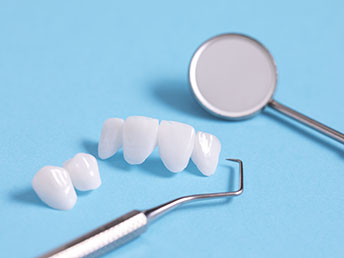Pain Management
Before Your Treatment
In an emergency dental situation in which you are waiting to be seen by one of our professionals, you may choose to take an over-the-counter Tylenol, Ibuprofen or other pain reliever that you are accustomed to taking. If you are unsure, please contact our office.
During Your Treatment
Don’t be nervous about your upcoming visit! We will always ensure that you experience minimal pain during any procedures at our clinic. We have the necessary technologies and methods to make your visit with us pain-free.
Nitrous Oxide
Nitrous Oxide, or what many refer to as “being gassed” has been a popular and primary medium for sedation for the dental industry for well over a decade. Nitrous oxide sedation is very safe and common. You are able to breathe on your own as you receive oxygen and you remain in full control of all bodily functions. \In most cases, you will simply fall asleep. We like to use nitrous oxide sedation because the level of sedation can be altered at any time if you are still experiencing some discomfort. After completion of your procedure, there are no after effects or “hangovers” and any temporary affects are usually over in a matter of seconds. There are no side effects on the heart of lungs. It is also appreciated by dental professionals because nitrous oxide sedation typically takes full effect within a matter of a couple of minutes. The main caution with this type of sedation is for individuals who have been diagnosed with chronic obstructive pulmonary disease or COPD. If you have emphysema, chest problems, M.S., or are experiencing difficulty breathing you may not want to use nitrous oxide. In any case, we will gladly allow you to experience the sedation very slowly to ensure it is not affecting you in a negative manner.

Oral Conscious Sedation
Oral conscious sedation may be a better option for you if you are uncomfortable with nitrous oxide. For more aggressive treatments we may go ahead and provide oral conscious sedation along with nitrous oxide. If you are experiencing anxiety due to fear or have had a traumatic dental experience in the past, you may want to receive an oral conscious sedation. This type of sedation is also good for individuals who have a bad gag reflex, have very sensitive teeth, are on a very limited schedule, or have fear of needles and shots may want to receive oral sedation. The main concerns with oral conscious sedation is that you must have a companion to provide transportation to and from the dentist to ensure safety, as you will likely be very drowsy.
IV Sedation
Another sedation is our sedation by IV. This is where we administer sedation into the blood system via needle prior to dental treatment. You will remain conscious during IV sedation and will be able to understand and respond to requests from your dentist. However, you will likely not remember much regarding your treatment as it induces you into a state of deep relaxation. In fact, many people remember nothing at all as if they were completely asleep during the procedure. It is important to know that IV sedation is not a painkiller. A local anesthetic will still need to be administered. If you have a fear of injections, we will ensure that your IV sedation has fully kicked in before we apply the local anesthetic to your gums.
Crown & Bridge
What Is A Dental Crown?
A dental crown is used to completely cover a tooth that is damaged. It helps to strengthen the tooth but can also be used to improve its shape, appearance and alignment. Porcelain, a common dental crown material, can be matched to your teeth’s natural color, creating a flawless look. Other crown materials include metal alloys, ceramic and zirconia, and they are usually a better option for back teeth because they are stronger. Dr. Robertson prefers to use zirconium crowns because they are extraordinarily tough, require less tooth removal, and require almost no metal. They are also more natural with a pure white color.
Dental crowns are used to replace large fillings if there is not enough of your original tooth left. They are also used for the following:
- To protect weak teeth from further damage
- To restore a tooth that has been fractured
- As a bridge attachment
- As dental implant covers
- As covers for teeth that are discolored or misshapen
- As covers for teeth that have undergone root canal treatment
What Is A Tooth Bridge?
Bridges are used in situations where teeth are missing. If missing teeth aren’t replaced, the adjacent teeth will eventually shift, which can lead to a bad bite. Missing teeth can also lead to gum disease and TMJ disorders developing.
A bridge fills in the space where teeth are missing. It can be attached either to the adjacent teeth using crowns or using dental implants. In terms of materials, the choice is varied, and it is a decision you will make after consulting with your dentist. The material used will be determined by the position of the missing teeth and will be based on price, function and aesthetics.
How Does A Crown Or Bridge Procedure Work?
A crown and bridge procedure refers to the insertion of a bridge using crowns to fix it in place. The first step is for you to come in for a consultation so we can determine what the best solution for your particular case is.
During the following visit, we will undertake crown and bridge preparation, which involves preparing the abutment teeth—the adjacent teeth which will hold the bridge in place. This means we will reshape the teeth by removing some of the enamel so that we have room to place the crown on top of the teeth.
We will then make an impression of your teeth, which will be used as a guide to make the bridge, crowns and pontic—the false tooth that goes between the crowns. We will make a temporary bridge for you to wear until we can fit in the permanent bridge.
The second session will start with us removing the temporary bridge. We will fit in the new bridge and make the required adjustments to ensure it fits properly. You may have to come back several times to make sure that the bridge fits properly, which means we will use a temporary solution to keep it in place. After a few weeks, once you are happy that it fits well and your bite is comfortable, we will cement the crown or bridge into place.
How to care for your crown & bridge?
It might take a while for you to get used to your new bite, which is why you should stick to eating soft foods until you get used to it. The good news is that a crown and bridge will make eating easier.
In terms of care, you need to keep the rest of your teeth as healthy as possible, which will determine how successful the bridge is. So, this means you need to brush at least twice a day and floss at least one per day. Using an antiseptic mouth wash will also do wonders to keep your teeth healthy.
A crown or bridge can help restore your smile and make life easier because you will find it easier to chew, speak and eat. To find out if you need a crown or a bridge, or both, book an appointment now and let’s get started on restoring the health of your teeth.

